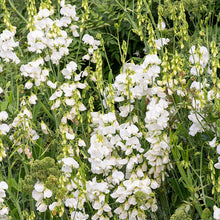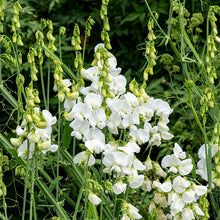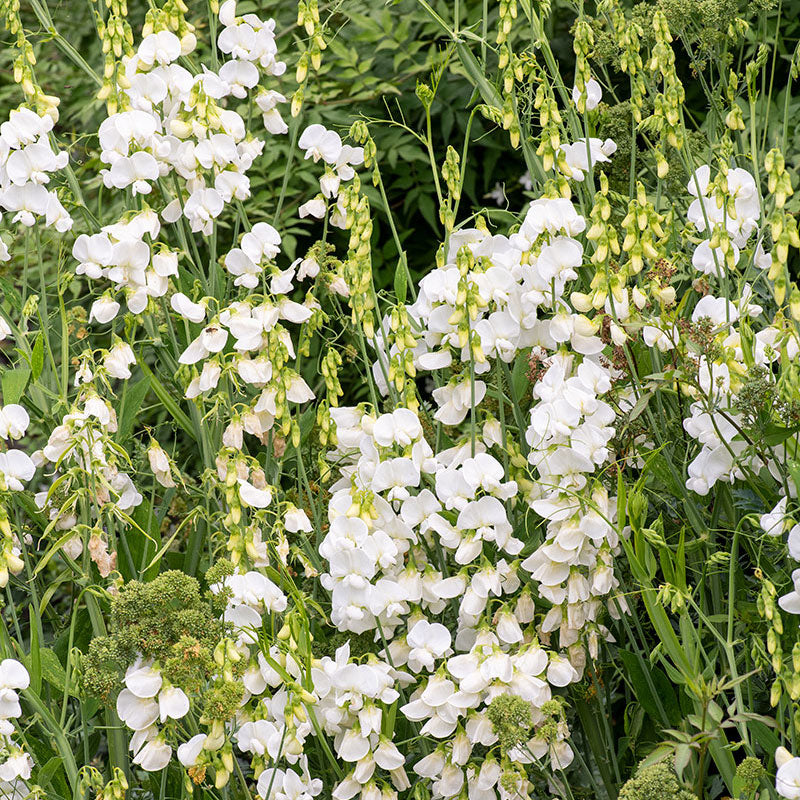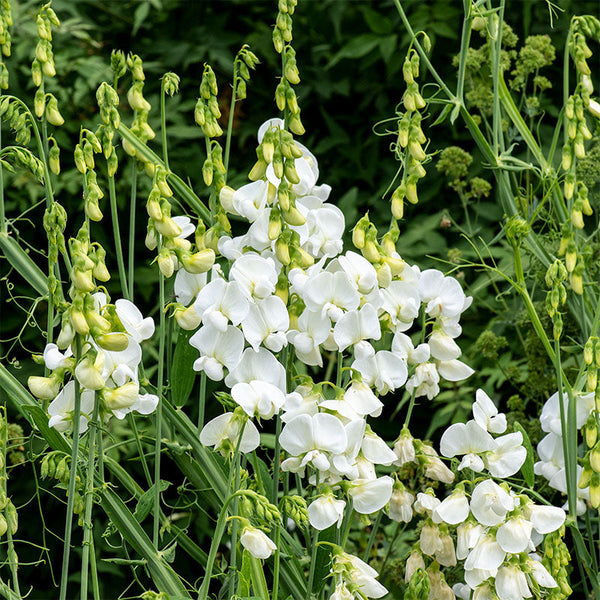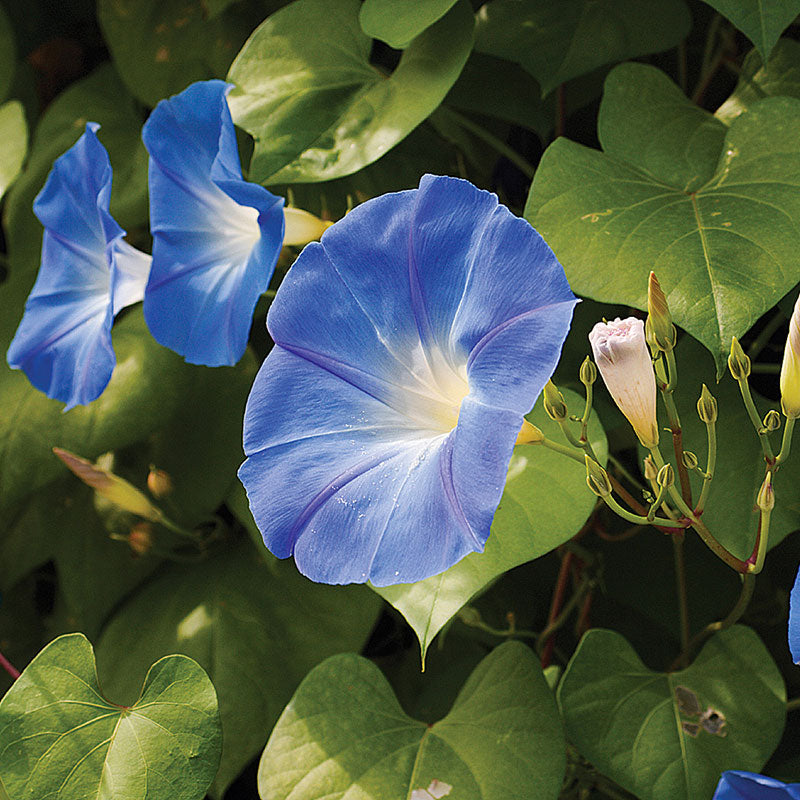SOWING INSTRUCTIONS
Depth:
1/2-1"; nick seed coat or soak seeds for 24 hours prior to planting.
Starting Indoors:
Start indoors in pots 6-8 weeks before planting out. Keep at 55-65°F.
Starting Outdoors:
Direct sow in early spring into cool soil.
PLACEMENT & CULTIVATION
Everlasting pea is one of the best heirloom flowering groundcovers, with large tresses of impeccable pea-shaped flowers and matte sea-green leaves and stems. Long-blooming throughout the summer, it benefits from deadheading but is showy without added care. Provide a trellis or post for it to climb, or allow it to drape over walls and spill down banks. Considered a spreader as it produces a generous amount of seeds. Caution: seeds have mild toxic effects if ingested in significant amounts.
Final Spacing:
6-10" supported; 2-3' unsupported
Soil pH:
Slightly acidic to neutral (6.5-7.0)
Fertilizer:
Mix in a few inches of compost prior to planting and topdress with an additional 2" or so every spring. If soil is not rich, apply an organic granular fertilizer.
Diseases & Pests:
If slugs are troublesome, sprinkle some diatomaceous earth, crushed eggshells, or iron phosphate pellets on the ground around the base of the plant. Aphids can be a nuisance; hose plants down daily until the pests are gone, or apply an insecticidal soap. Avoid powdery mildew and leaf spot with proper spacing in a location that has good air circulation. A preventive organic fungicide can also be applied.
When to Cut for Bouquets:
Cut when 3/4 of florets are open.






























